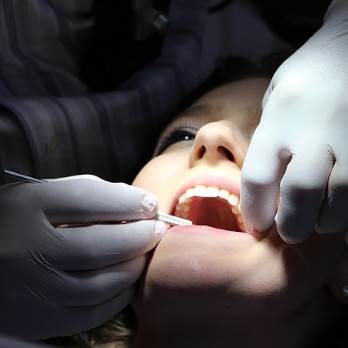Learn More About Invisible Dental Aligners
Invisible Aligners are designed to blend with natural teeth while supporting function and appearance. Costs might vary depending on materials, clinic services, and treatment plans. Their growing use reflects interest in dental options that balance aesthetics with practicality.

How Much Are Aligners for Teeth and What to Know
Invisible aligners typically cost between $1,800 and $8,000 for a complete treatment plan. The wide price range reflects several factors that influence the total investment. Treatment complexity plays a significant role—straightforward cases requiring minimal correction generally cost less than complex alignment issues. The duration of treatment also affects pricing, with longer treatment plans commanding higher fees. Additionally, provider type impacts cost considerably, as treatments from orthodontists often come with premium pricing compared to direct-to-consumer brands. Geographic location can also influence pricing, with urban areas typically charging more than rural locations for the same services.
Before committing to invisible aligners, patients should understand that treatment requires consistent wear of 20-22 hours daily for optimal results. Regular check-ins with providers are necessary to monitor progress, whether in-person or through virtual check-ins. Most importantly, not all dental issues can be treated with invisible aligners—severe misalignment, significant bite problems, or rotational issues might require traditional orthodontic approaches.
Invisible Aligners for Teeth Cost Explained
The financial investment in invisible aligners varies based on the treatment path chosen. Treatment through orthodontist-supervised aligners like Invisalign typically ranges from $3,000 to $8,000, reflecting the professional oversight and in-person care provided. Mid-range options that blend professional supervision with remote monitoring generally cost $2,000 to $5,000. Direct-to-consumer aligner brands that operate primarily through remote monitoring offer the most affordable options, usually between $1,200 and $2,500.
Insurance coverage can significantly reduce out-of-pocket expenses. Many dental insurance plans with orthodontic benefits cover invisible aligners similarly to traditional braces, typically paying between 25% and 50% of treatment costs up to a lifetime maximum. Flexible Spending Accounts (FSAs) and Health Savings Accounts (HSAs) provide another avenue for making treatment more affordable by allowing patients to use pre-tax dollars toward aligner treatment. Most providers also offer payment plans, typically spreading costs over 12-24 months, sometimes with interest-free options for qualifying patients.
Finding Invisible Dental Aligners in Your Area
Finding quality invisible aligner providers locally begins with researching orthodontists and dentists in your area who specialize in clear aligner therapy. Provider experience is crucial—practitioners who have completed numerous aligner cases typically deliver better results. When evaluating local options, consider requesting before-and-after photos of previous patients with similar dental concerns to your own.
The consultation process varies by provider type. Traditional orthodontic offices usually offer in-person consultations that include comprehensive examinations, x-rays, and physical impressions or 3D scans of your teeth. Some providers now offer hybrid models, combining in-office initial assessments with remote monitoring. Fully remote options exist as well, where impression kits are mailed to your home or you visit a scanning center for initial imaging.
When choosing between local providers, consider factors beyond just proximity. Treatment approach, provider experience with similar cases, available appointment times, and financial options all matter significantly. Many patients find value in reading reviews from other local patients to gauge satisfaction with both treatment outcomes and the overall experience.
Comparison of Invisible Aligner Options
| Provider | Treatment Type | Average Cost | Treatment Duration | Provider Interaction |
|---|---|---|---|---|
| Invisalign | Orthodontist-supervised | $3,000-$8,000 | 12-18 months | Regular in-person visits |
| ClearCorrect | Orthodontist-supervised | $2,500-$5,500 | 12-18 months | Regular in-person visits |
| Byte | Direct-to-consumer | $1,895-$2,295 | 3-6 months | Remote monitoring only |
| SmileDirectClub | Direct-to-consumer | $1,950 | 4-6 months | Remote with optional scan centers |
| Candid | Hybrid model | $3,300-$5,500 | 6-9 months | Initial in-person + remote monitoring |
Prices, rates, or cost estimates mentioned in this article are based on the latest available information but may change over time. Independent research is advised before making financial decisions.
The Treatment Process and Timeline
The invisible aligner journey begins with comprehensive diagnostics, including dental impressions or 3D scans that serve as the blueprint for creating custom aligners. Treatment planning follows, where orthodontists or dental professionals map out the precise movements each tooth will make throughout the process. Once the treatment plan is approved, custom aligners are manufactured to fit the unique contours of the patient’s teeth.
Most patients progress through multiple sets of aligners, wearing each set for 1-2 weeks before advancing to the next. The entire treatment typically spans between 6 and 18 months, depending on case complexity. Throughout treatment, regular progress checks ensure teeth are moving as planned. After completing the active alignment phase, most patients transition to wearing retainers—initially full-time, then gradually reducing to nighttime-only wear—to maintain their new smile permanently.
Maintenance and Long-term Considerations
Maintaining results after aligner treatment requires consistent retainer use. Initially, retainers are typically worn full-time (except when eating or brushing) for several months. Eventually, most patients transition to nighttime-only wear, which must be continued indefinitely to prevent teeth from shifting back toward their original positions. Replacement retainers are necessary every 6-24 months due to wear, at a cost of approximately $100-$300 per set.
Beyond retainer wear, proper oral hygiene remains essential. The excellent oral hygiene habits developed during treatment—brushing after meals and flossing daily—should continue long-term. Regular dental check-ups every six months help catch any potential issues early. While aligners can create beautiful smiles, they cannot prevent future dental problems, making ongoing dental care crucial for maintaining both aesthetic results and overall oral health.
This article is for informational purposes only and should not be considered medical advice. Please consult a qualified healthcare professional for personalized guidance and treatment.




